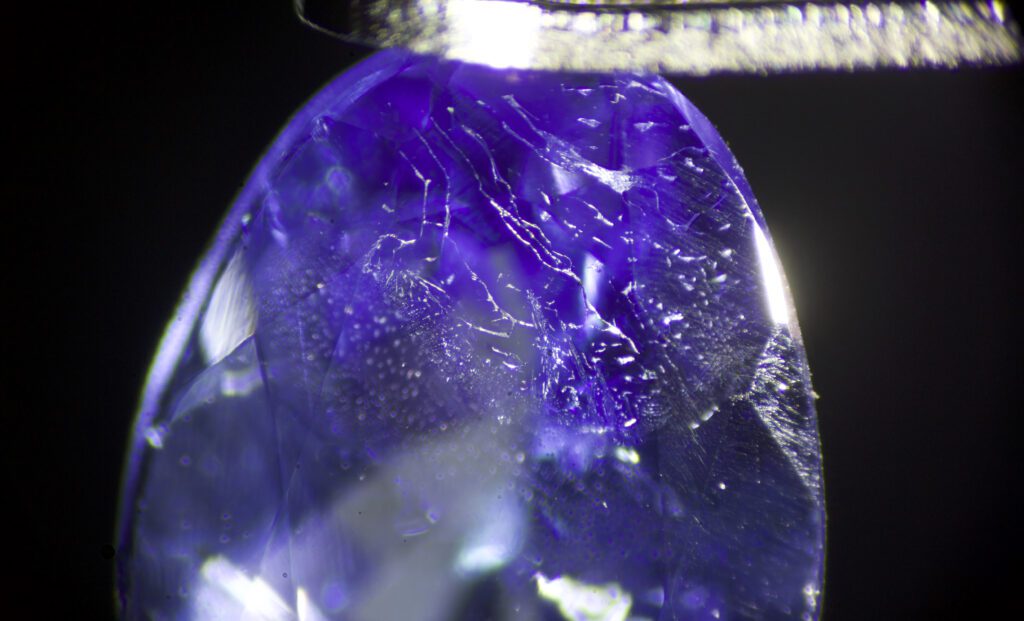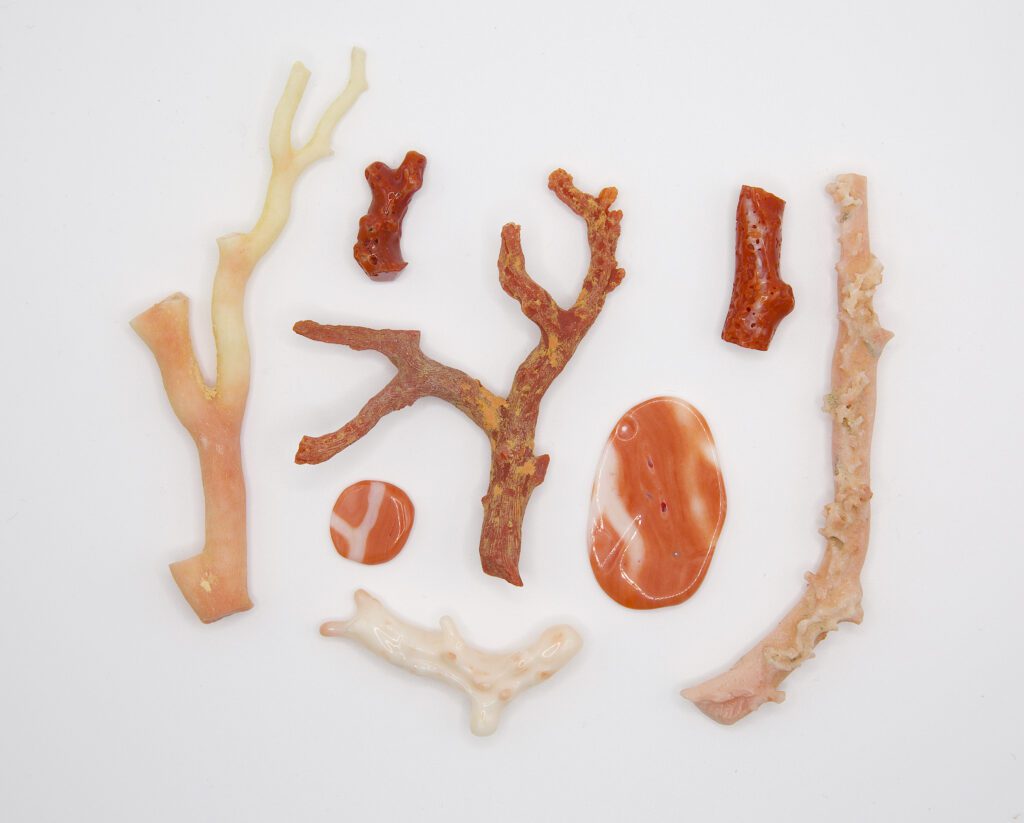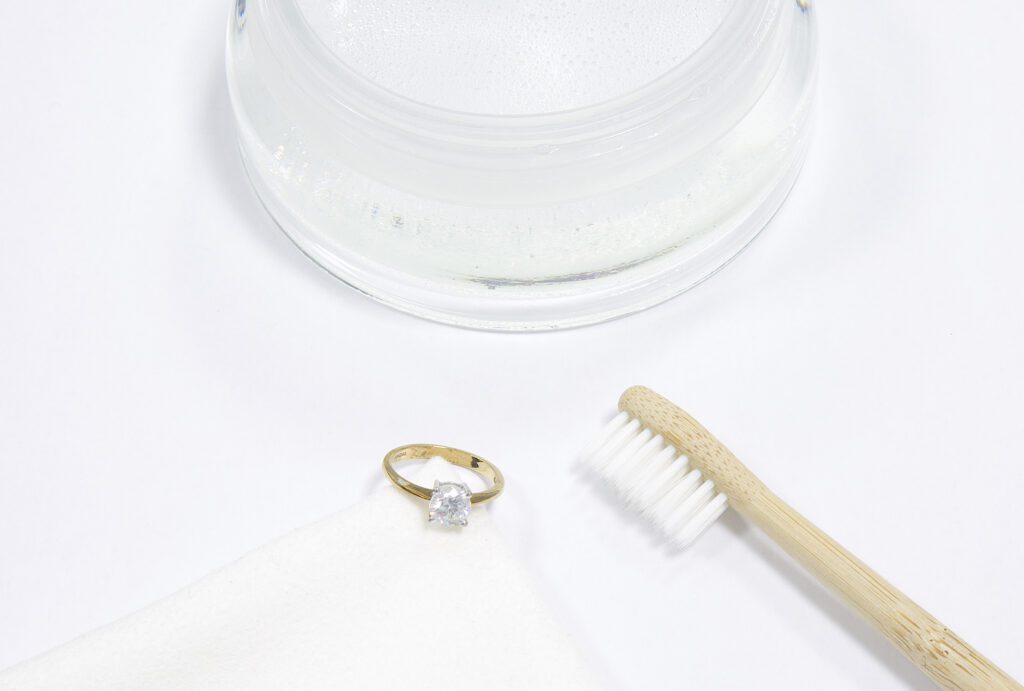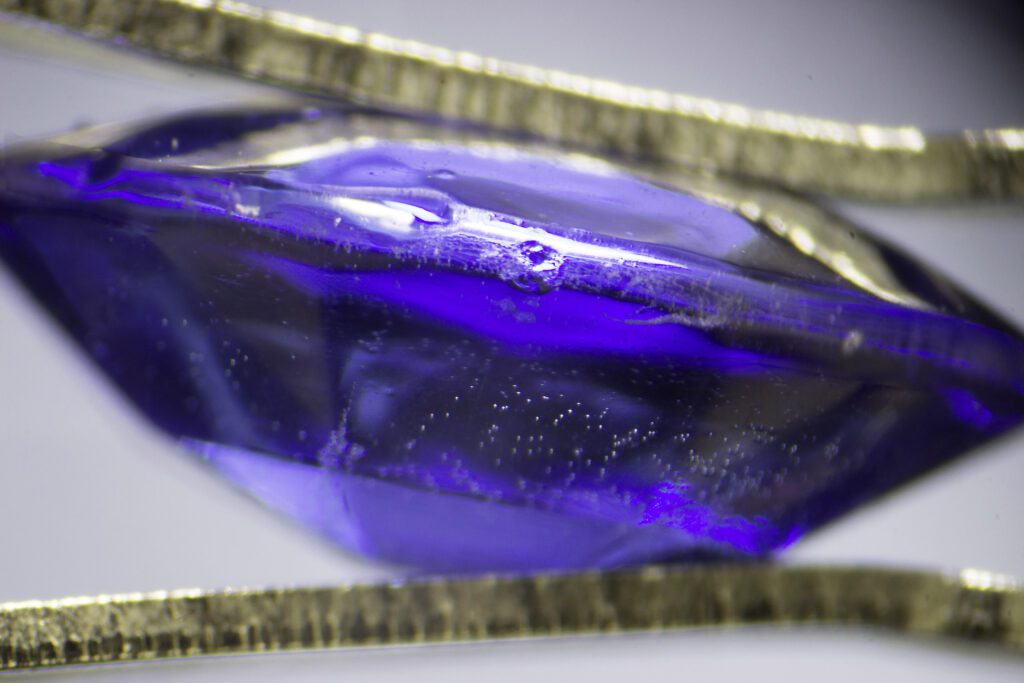Do you need expert gemstone jewellery care advice from a gemmology expert? Here, Gem-A tutor Pat Daly shares his top gemstone jewellery cleaning tips and offers some advice on caring for your precious gemstones for long-lasting heirloom sparkle.
Owners and collectors of gem-set jewellery soon find that they have accumulated a substantial financial and emotional investment. Losses, for any reason, are unwelcome, and thought should be given to avoiding them. Care in storing and wearing jewellery may be backed up by maintenance, security and insurance because even the most careful precautions cannot guarantee that misfortunes will not occur.
Gemstone Jewellery Care Advice
Routine care of jewellery involves understanding the ways in which metals and gemstones may be vulnerable. The most important of these are related to exposure to abrasion, breakage, corrosive chemicals, heat and strong light.
Resistance to abrasion depends on hardness. To the gemmologist and jeweller, this means the ability to resist scratching by other materials. The toughness of materials is their resistance to breaking, and their stability refers to their ability to avoid damage by chemical attack and exposure to heat and strong lighting.
Understanding Gemstone Hardness
The hardness of gemstones ranges from that of amber, which is about as hard as a fingernail, to diamond, which is the hardest material known. In the jewellery trade, hardness is expressed as a number between 1 and 10. Diamond has a hardness of 10 on this scale. Stones with a hardness of less than 7, the hardness of quartz, are regarded as relatively soft stones which must be handled with particular care. Such stones include opal, peridot and tanzanite, all of which are popular gemstones.


Photographed by Gabriel Kleinberg.
These are not suitable for everyday wear and should not be worn while carrying out household cleaning, gardening or sports. Precious metal alloys are all soft, about 3 to 4.5 on the scratch hardness scale, and so, even if a gemstone is hard, the ring in which it is set may be vulnerable to scratching.
How to Avoid Gemstone Fractures
Stones may break by fracture, breaking in random directions, and cleavage, which is breaking in directions which are related to their atomic structure. Metals may fracture but can also be dented or otherwise distorted without breaking. Most such damage is caused by physical stress, such as accidental blows, but gemstones may also fracture because they are subjected to rapid changes in temperature in workshops, for example.
Diamond, sapphire and ruby are the hardest gemstones but may still become worn-looking because facet edges accumulate many small fractures. Such damage may be avoided by taking the same precautions as are used to minimize scratching.
Sensitivity to Heat and Light
The strength of pearl and shell depends on both mineralized and water-bearing organic components. Storage in hot, dry conditions drives off water, weakening the structure and causing fractures in the mineralized material. These gemstones should not be kept in places close to fires or radiators, for example, where this may be a risk. The crazing of opal (the development of intersecting fractures) has been linked to drying out since opal incorporates some water in its structure, and amber may craze with age. The likelihood of these problems developing might be reduced by not leaving the stones in dry or hot conditions.


Precious opal, which susceptible to crazing in warm conditions. Photographed by Pat Daly.
Heat and strong light, such as sunlight and strong shop lights, may affect colour. Sunlight may fade some dyed stones and weaken the body colour of some transparent stones. The yellow colour of some sapphires and beryls, brown topaz, the pink colours of kunzite, quartz and beryl, and some amethysts are reported to fade after long exposure to sunlight. Coral, conch and melo pearls may fade in the same way.
Gemstones at Risk of Chemical Damage
Chemical damage may be caused by exposure to commonly used fluids as well as the strong acids used in jewellery workshops. Jewellery cleaning fluids should be used cautiously, and any manufacturer’s instructions should be complied with. Household cleaners, such as bleach, may damage some stones and metals, and chlorinated water in swimming pools and hot tubs can damage jewellery.
Gemstones known to be vulnerable to chemical damage include biogenic materials, such as pearl, coral, and shell, and porous stones, such as opal and turquoise. Malachite, rhodochrosite and lapis lazuli react with acids, and peridot can be affected by strong household chemicals. Most of these materials can be adversely affected by chlorinated water, vinegar, lemon juice and other mild solutions.


Coral specimens photographed by Gabriel Kleinberg.
Jewellery metals may be pitted and weakened by the same fluids. Gold and platinum are very resistant to chemical attack, but the metals used in their alloys are not. They may dissolve, leaving surface pits, and solders, used for attaching claws, are especially vulnerable. Jewellery should not be worn in chlorinated water or exposed to the other chemicals mentioned above.
Some treated stones may be harmed by solvents, which can remove dyes and filling materials used to disguise fractures. Emeralds, for example, are very often fracture-filled because it is impossible to source enough untreated material to satisfy consumer demand. Once again, cleaning and other common household fluids may be a risk to these stones.
Caring for Your Gemstone Jewellery
There seem to be so many things threatening jewellery that owners may fear to handle it at all, but the reason for learning about hazards is to avoid them. For the most part, a commonsense approach is enough to avoid damage, but a few precautions may be taken to minimize risk.
Firstly, it is best to apply cosmetics before wearing jewellery, especially if pearls or coral are your preference. Physical and chemical damage should be avoided while jewellery is worn. Stones that might fade in sunlight are best reserved for wear in the evenings. If it is found necessary to remove rings when hands are washed outside the home, the jewellery should not be put down on a surface; much jewellery has been lost in this way. It should be secured in a pocket or threaded on a chain or bracelet.


A string of pearls should be treated with care, especially when applying perfume and cosmetics. From the Gem-A Archives.
After wearing, round earrings and gem-set rings, which might roll, should be placed in a dish rather than left on top of a table or cabinet. Pearls, coral and other vulnerable materials benefit from gentle cleaning with a soft, dry cloth before storage.
Jewellery may be damaged if pieces are allowed to rub against each other. Compartmented jewellery boxes with grooves to accommodate individual rings are useful. If necessary, items can be wrapped in soft cloth. Tissue paper may contain sulphur and is not ideal for the purpose.
Jewellery should be cleaned regularly so that gemstones are able to display the beauty for which they are admired. It can be inspected at the same time; the security of gemstone settings and bead strings and the proper operation of hinges, clasps and safety chains should be checked. A magnifying glass will help in inspecting claws and other settings.
Strings of beads and jewellery incorporating closed-back settings, where stones can be seen only from the front, should not be immersed. Jewellery which can be safely immersed is best cleaned with a soft brush and soapy water in a plastic bowl. There should be no chance of loose stones disappearing down drain holes or of brittle stones being dropped onto the hard surfaces of sinks.
Since precautions sometimes fail, jewellery should be insured against damage and loss. Values may be updated by appraisal by jewellery valuers who are registered with the Jewellery Valuers Association or the National Association of Jewellers.



